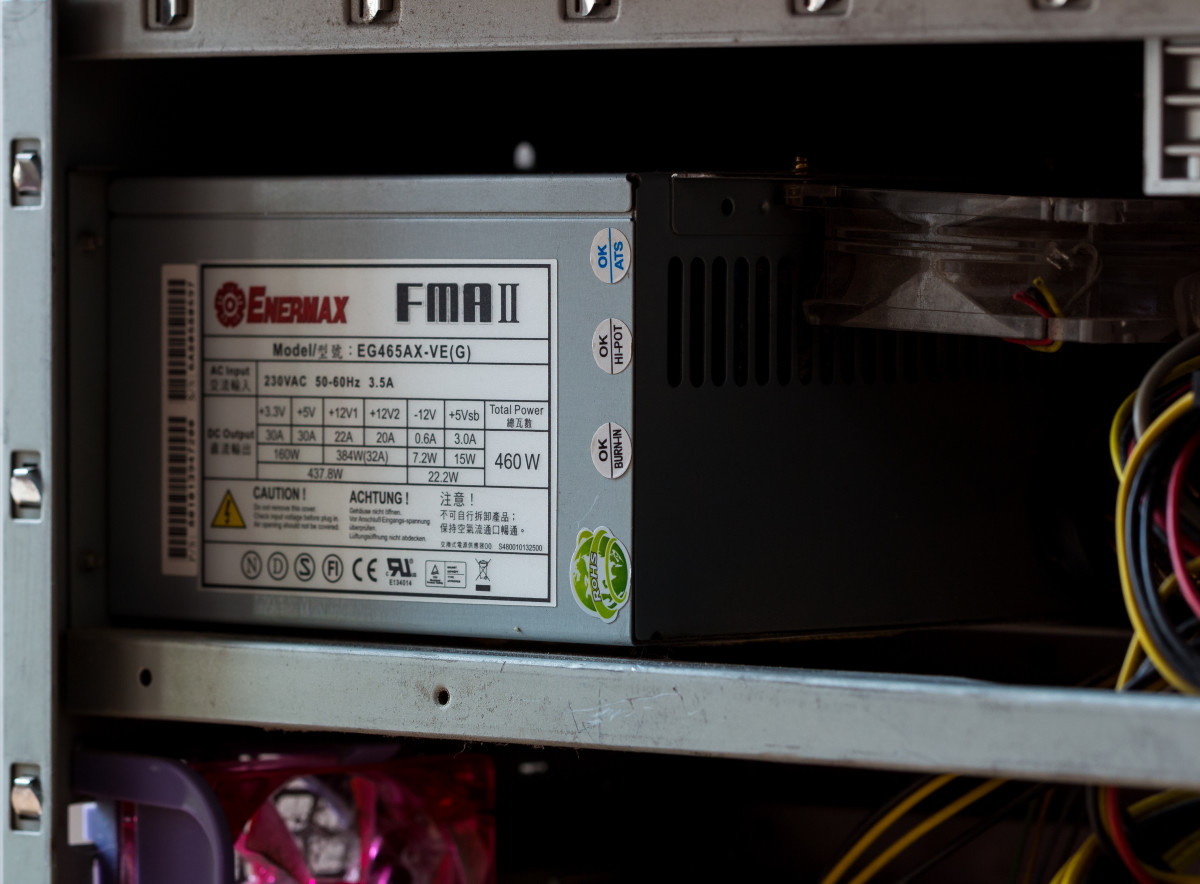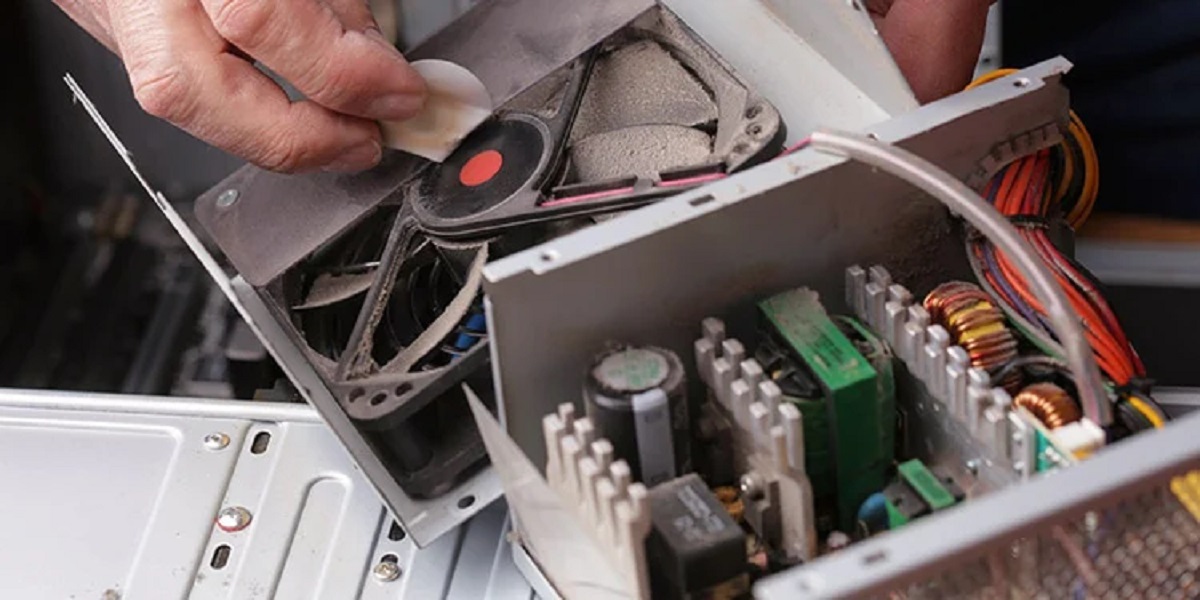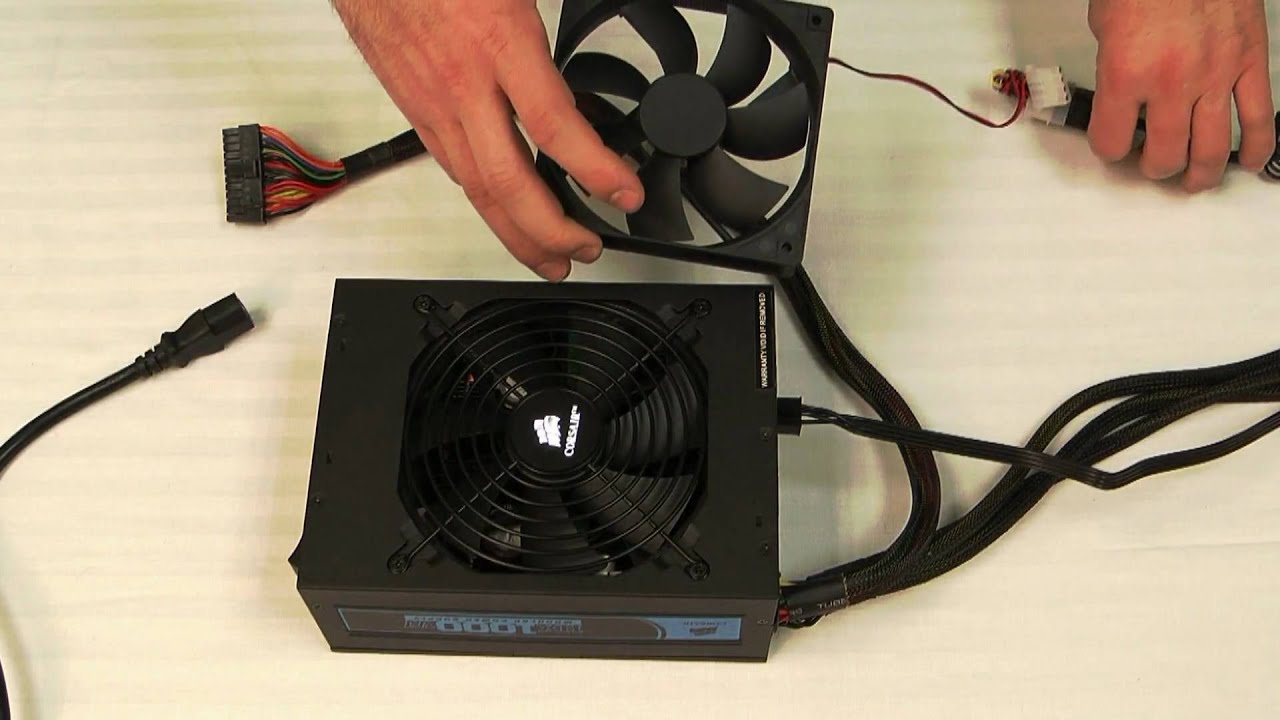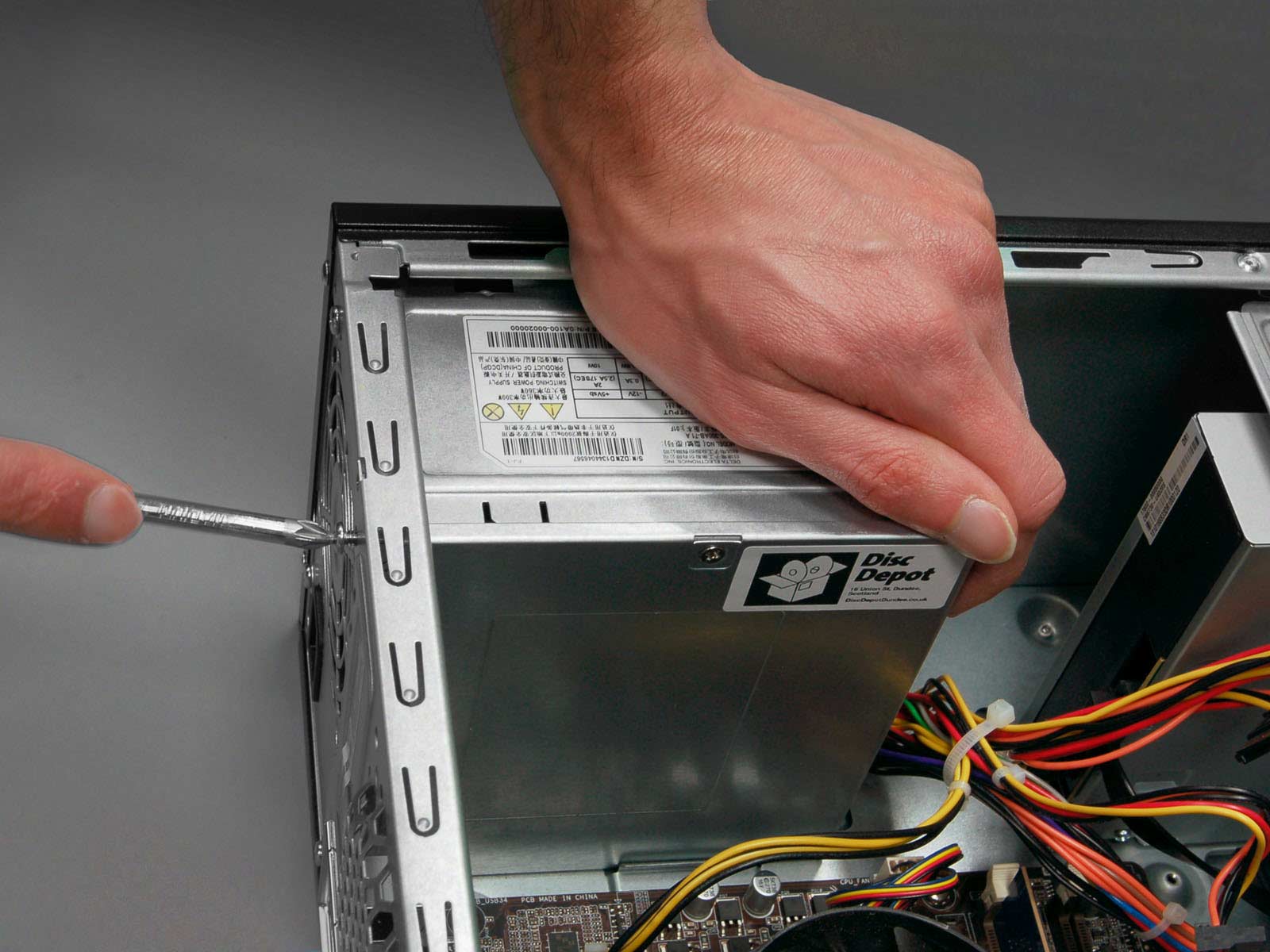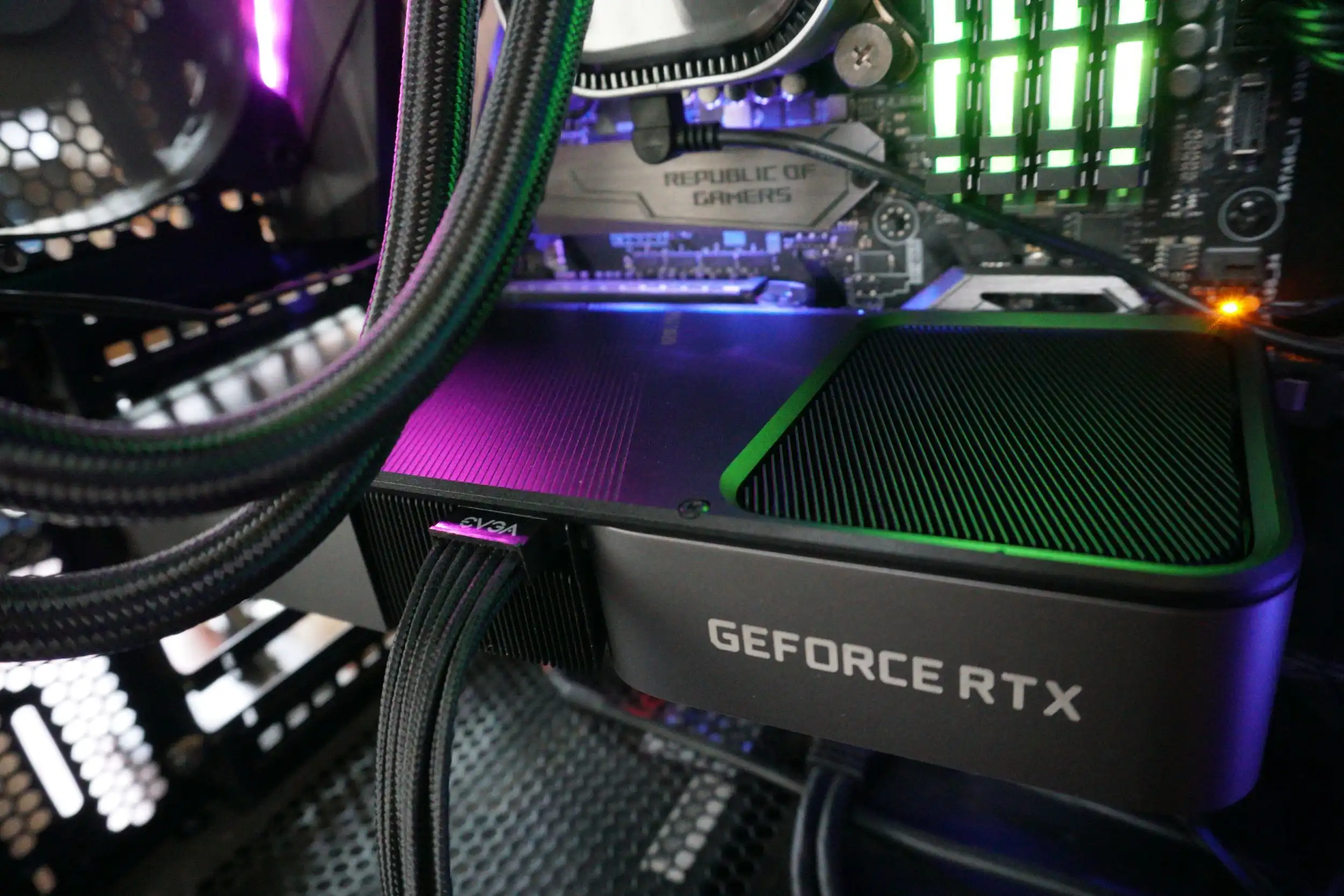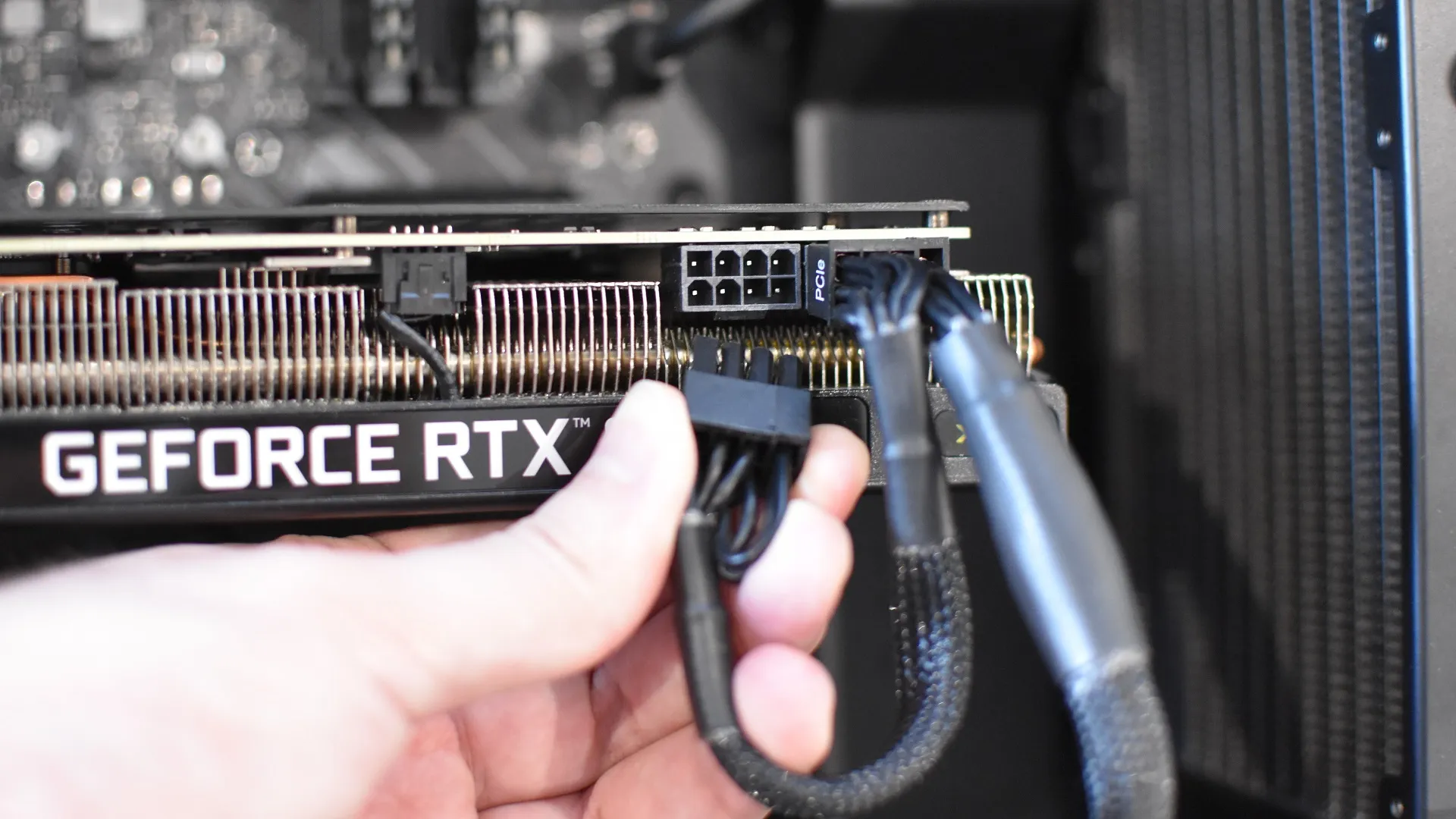Introduction
Welcome to our guide on when you should consider opening a power supply unit (PSU). The power supply unit is a critical component in any computer system, as it converts electrical power from the outlet to the appropriate voltage needed to run the various components. It ensures a stable and reliable power supply to keep your computer running smoothly.
While most computer users never need to open their PSU, there are certain situations where it may be necessary. In this article, we will explore the signs of a faulty PSU, the reasons to open a PSU, precautions to take before opening it, and a step-by-step guide to safely opening the unit. We will also address common problems you may encounter and when it is advisable to seek professional help.
Before we begin, it is important to note that opening a power supply unit should only be done by individuals with technical knowledge and experience working with electronics. Mishandling the internal components can cause damage to the unit and, in some cases, pose a risk of electric shock. If you are unsure of your capabilities, it is always recommended to consult a professional.
Now that we have covered the basics, let us delve deeper into understanding the power supply unit and the situations that may warrant its opening.
Understanding the Power Supply Unit (PSU)
The power supply unit (PSU) plays a crucial role in the functionality of a computer. It is responsible for converting the AC (alternating current) power from the electrical outlet into the DC (direct current) power required by the components in your computer system. The PSU ensures a consistent and reliable power supply, preventing voltage fluctuations and protecting your hardware from damage.
A power supply unit is typically located at the back of your computer case and connects to the motherboard, providing power to all the internal components, such as the CPU, graphics card, hard drives, and cooling fans. It is important to choose a PSU that can handle the power requirements of your system. Factors to consider include wattage, efficiency, and the availability of connectors for your specific hardware.
Modern power supply units often come with additional features, such as modular cabling, which allows you to connect only the cables you need, minimizing clutter and improving airflow. Some PSUs also have built-in fan controls to help regulate the cooling of your system, reducing noise levels and improving overall performance.
Understanding the specifications and features of a power supply unit is essential when troubleshooting issues or considering opening it. It is important to note that opening the PSU will void the warranty, so it should only be done as a last resort or by experienced individuals.
Now that you have a basic understanding of what a power supply unit does, let us explore the signs that indicate your PSU may be faulty and need attention.
Signs of a Faulty Power Supply Unit
A faulty power supply unit (PSU) can cause a range of issues in your computer system. Recognizing the signs of a failing PSU is crucial in diagnosing and resolving power-related problems. Here are some common indicators that your PSU may be faulty:
- Random Shutdowns: If your computer shuts down unexpectedly and without warning, it could be a sign of a faulty PSU. When the power supply is unable to deliver a consistent and stable power output, the computer may shut down to protect the components from damage.
- Unreliable Booting: If your computer has trouble turning on or experiences multiple failed boot attempts, it could be due to an inadequate power supply. The PSU may struggle to provide the necessary power to all the components, leading to booting issues.
- Intermittent Freezing or Blue Screens: A faulty PSU can cause system freezes or frequent blue screen errors (BSOD). These issues may occur during regular usage or when running resource-intensive tasks. Inconsistent power supply can disrupt the stability of the system, resulting in crashes and errors.
- Strange Noises or Odors: If you hear unusual noises, such as buzzing, crackling, or fan noise, coming from your PSU, it could indicate a hardware malfunction. Additionally, a burnt smell or the presence of smoke should never be ignored and may indicate a serious issue with the power supply.
- Inconsistent or Flickering Power: If you notice flickering lights or other electronic devices connected to the same power source intermittently turning on and off, it may be a sign of an unstable PSU. Fluctuating power delivery can cause problems not only in your computer but also in other electrical devices.
It is important to note that these signs can also be caused by other hardware or software issues, so it is essential to perform thorough troubleshooting to pinpoint the exact cause.
If you are experiencing any of these symptoms and suspect a faulty PSU, it may be necessary to open the unit for further inspection. However, before attempting to open the PSU, it is vital to take certain precautions to ensure your safety and protect your hardware, which we will discuss in the next section.
Reasons to Open a Power Supply Unit
Opening a power supply unit (PSU) should only be considered as a last resort, especially if you are not experienced in working with electronics. However, there are a few valid reasons why you may need to open a PSU:
- Visual Inspection: Opening the PSU allows for a visual inspection of the internal components. If you suspect physical damage, loose connections, or signs of overheating, a thorough examination can help identify the issue.
- Cleaning and Maintenance: Over time, dust and debris can accumulate inside the PSU, obstructing airflow and potentially causing overheating. Opening the unit allows you to clean the internal components properly, ensuring better performance and longevity.
- Repair or Replacement of Components: In rare cases, specific components within the PSU may become faulty or damaged. Opening the unit can provide access to these components, allowing for repairs or replacements, which can be more cost-effective than purchasing a new PSU.
- Modifications: Some advanced users or computer enthusiasts may want to modify their power supply unit to improve performance, customize the cables, or install additional features. Opening the PSU is necessary to implement these modifications.
It is crucial to note that opening the PSU should be approached with caution, as it carries certain risks. Mishandling the components or failing to follow proper safety precautions can result in electric shock, damage to the unit, or voiding the warranty.
Before deciding to open a power supply unit, carefully consider the necessity and whether the benefits outweigh the potential risks. In many cases, it is recommended to seek professional assistance or contact the manufacturer for guidance.
Now that you understand the reasons to open a PSU, let us move on to the precautions you should take before attempting to open the unit.
Precautions Before Opening a Power Supply Unit
Opening a power supply unit (PSU) exposes you to potential risks, including electric shock and damage to the unit. Therefore, it is crucial to take the following precautions before attempting to open the PSU:
- Disconnect from Power: Ensure that your computer is completely shut down and disconnected from the power source. Unplug the power cable from the electrical outlet, and if possible, also disconnect any other peripheral devices.
- Allow for Cooling: Let the PSU cool down for a significant amount of time before opening it. The internal components can retain heat, which may cause burns or damage if touched immediately after use.
- Wear Protective Gear: Put on anti-static wrist straps or gloves to prevent electrostatic discharge (ESD) that can damage sensitive components. Additionally, safety glasses are recommended to protect your eyes from any potential debris.
- Prepare a Clean Work Area: Find a clean, well-lit workspace, preferably with an anti-static mat or surface. Remove any potential hazards, such as liquids or metallic objects, that could cause damage or accidents.
- Refer to Manufacturers’ Guidelines: Consult the manufacturer’s documentation or website for any specific instructions or warnings regarding the opening of the PSU. Following their guidelines ensures you do not inadvertently violate warranty terms or cause further harm to the unit.
- Use Proper Tools: Have the necessary tools ready, such as screwdrivers or pliers, to safely remove screws or connectors. Using the appropriate tools helps prevent damage to the PSU casing or internal components.
- Proceed with Caution: Remain cautious and gentle when handling the PSU. Avoid excessive force or sudden movements that could damage delicate parts or connectors.
Keep in mind that opening a PSU should only be attempted by individuals with technical knowledge and experience working with electronics. If you are unsure of your capabilities or encounter any difficulty, it is advisable to seek professional assistance.
With these precautions in mind, you are now ready to proceed with opening the power supply unit. In the next section, we will provide a step-by-step guide to safely open the PSU.
Step-by-Step Guide to Opening a Power Supply Unit
If you have determined that opening the power supply unit (PSU) is necessary and you have taken the appropriate precautions, you can follow these step-by-step instructions to safely open the PSU:
- Gather Tools: Ensure you have the necessary tools, such as a screwdriver or pliers, to remove the screws or connectors securing the PSU casing.
- Disconnect Cables: Carefully disconnect all power cables connected to the PSU, including the main power cable and any peripheral connectors.
- Remove the PSU from the Case: Depending on your computer case, the PSU can be mounted at the top or bottom. Locate and remove the screws or other mounting mechanisms holding the PSU in place.
- Place PSU on a Static-free Surface: Once the PSU is detached from the case, place it on an anti-static mat or surface to prevent damage from static electricity.
- Inspect the PSU Casing: Examine the exterior of the PSU for any visible signs of damage, such as dents, cracks, or bulging. Take note of any areas that require further investigation.
- Open the PSU Casing: Most PSUs have a metal casing held together by screws. Carefully remove these screws using the appropriate tool, ensuring you do not damage the internal components.
- Handle with Caution: After removing the case, be cautious when handling the internal components. Avoid touching any circuit boards or connectors unnecessarily.
- Inspect and Clean: With the PSU open, visually inspect the internal components for any signs of damage, loose connections, or excessive dust buildup. Use compressed air or an anti-static brush to clean any dust or debris that may have accumulated.
- Make Necessary Repairs or Replacements: If you identify any damaged or faulty components, take necessary action to repair or replace them. Ensure you have the appropriate parts and tools for the task.
- Reassemble the PSU: After conducting any repairs or cleaning, carefully reassemble the PSU in the reverse order of disassembly. Make sure all screws and connectors are securely fastened.
Remember to double-check all connections and ensure there are no loose parts before reattaching the PSU to the computer case. It is crucial to handle the PSU with care throughout the entire process to avoid damage to the unit or harm to yourself.
If you encounter any difficulties or are unsure about any step, it is recommended to consult a professional or contact the manufacturer for assistance.
In the next section, we will address common problems you may encounter when working with a power supply unit and provide possible solutions.
Common Problems and Solutions
When working with a power supply unit (PSU), you may encounter various problems. Here are some common issues and their possible solutions:
- Overheating: If your PSU is overheating, it can result in system instability or even a complete shutdown. Ensure that the PSU fan is functioning properly and not obstructed by dust or debris. Clean the PSU and surrounding area to improve airflow. If the issue persists, consider replacing the PSU with a more efficient model.
- Power Surge or Spike: A sudden surge or spike in power can damage the PSU and other components. Investing in a surge protector or uninterruptible power supply (UPS) can help protect your system from such events. Additionally, check the wiring in your home or office to ensure proper grounding and stability of the electrical supply.
- Insufficient Power: If your computer is experiencing frequent crashes or fails to boot properly, it may be due to an insufficient power supply. Check the wattage requirements of your system and ensure that the PSU meets or exceeds those requirements. Upgrading to a higher wattage PSU may resolve the issue.
- Loose Connections: Loose connections can cause intermittent power supply issues. Double-check all cables and connectors to ensure they are securely plugged in. If necessary, disconnect and reconnect each connection to eliminate any loose connections.
- Faulty Capacitors: Capacitor failure is a common problem in older PSUs. Look for bulging or leaking capacitors on the PSU circuit board. If you notice any, it is recommended to replace the capacitors or the entire PSU for reliable operation.
- Defective Fan: A malfunctioning fan can lead to overheating and system instability. If you suspect the PSU fan is not spinning or making unusual noises, it may need to be replaced. Take caution when handling the fan and ensure you choose a suitable replacement fan for the PSU model.
It is important to remember that opening the PSU to address these problems should only be attempted by individuals with the necessary technical expertise. If you are unsure or uncomfortable with troubleshooting the PSU, it is advisable to seek professional assistance.
If you have exhausted all troubleshooting options and the PSU-related issues persist, it may be time to consider seeking professional help. In the following section, we will discuss when it is appropriate to consult a professional for assistance with your power supply unit.
When to Seek Professional Help
While it is possible to diagnose and resolve some power supply unit (PSU) issues on your own, there are situations where it is best to seek professional help. Here are some circumstances when consulting a professional is recommended:
- Lack of Experience: If you do not have the technical expertise or experience working with electronics, it is best to consult a professional. Opening a PSU without the proper knowledge can result in further damage or even personal injury.
- Warranty Considerations: If your PSU is still under warranty, opening it yourself may void the warranty. It is advised to contact the manufacturer or authorized service center for assistance to avoid any warranty-related issues.
- Complex Issues: If you have performed troubleshooting steps and are unable to determine the root cause or fix the issue, it may require more in-depth diagnosis. A professional technician can utilize specialized equipment and knowledge to identify and resolve complex PSU problems.
- Safety Concerns: If you encounter visible damage to the PSU, such as burnt components or melted wires, it is crucial to prioritize your safety. A professional can safely handle such hazardous situations and perform the necessary repairs or replacements.
- Time and Convenience: If you are short on time or would prefer not to deal with the complexities involved in PSU repair, seeking professional help can save you valuable time and effort. Professionals have the necessary skills and resources to efficiently diagnose and resolve PSU issues.
When selecting a professional technician or service center, consider their reputation, experience, and track record of handling PSU repairs. Read reviews, ask for recommendations, and ensure they specialize in computer hardware repairs.
Remember that professional assistance may come at an additional cost, but it can provide peace of mind, especially when dealing with critical components like the power supply unit.
In the final section, we will summarize the key points discussed and conclude our guide on opening a power supply unit.
Conclusion
Understanding when and how to open a power supply unit (PSU) is essential for troubleshooting and resolving power-related issues in your computer system. However, it is crucial to approach PSU maintenance and repair with caution and only if you have the necessary technical knowledge and experience.
In this guide, we discussed the importance of the PSU in providing stable power to your computer components and the signs that indicate a faulty PSU. We explored valid reasons for opening a PSU, such as visual inspection, cleaning, maintenance, and component repair or replacement.
Prior to opening a PSU, taking proper precautions is vital to ensure your safety and protect the unit. We emphasized the importance of disconnecting from power, allowing for cooling, wearing protective gear, preparing a clean work area, and referring to manufacturers’ guidelines.
We provided a step-by-step guide for safely opening a PSU, along with common problems you may encounter and their potential solutions. However, in complex situations or if you lack the necessary expertise, seeking professional help is advised.
Remember that opening a PSU should be a last resort, and warranty considerations should be taken into account. Prioritize safety, and if unsure, consult a professional technician or the manufacturer for assistance.
By following the guidelines and precautions outlined in this guide, you can approach opening a power supply unit with confidence, ensuring optimal performance and longevity of your computer system.







